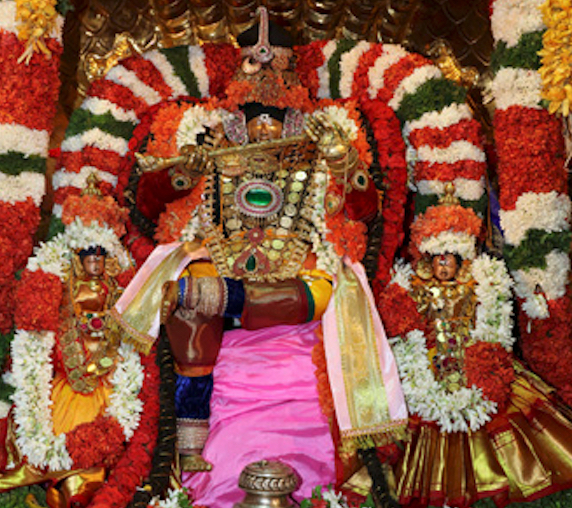Avatarotsavams – Three Days
Sundararaja Swamy is a Self-emerged God in the auspicious star Uttarabhadra in the Jyestha Masa of Lunar Calendar.
The main events of the Avatarotsavams are distributed over the three days beginning on the day with Stabhisha Nakshatra and ending on the day with Uttarabhadra Nakshatra (The Birth Star of Sri Sundararaja Swami) in the following manner
Third-Day
Earlier in the day abhisheskham is performed to the Moolavirat of Sri Sundararajaswami and Sri Padmavati Ammavaru after the Suprabhata and Sahasranamarchana. Special Kalyanotsavam is performed for Sri Padmavati Ammavaru between 10.30 am & noon.
A Thirumanjanam or Abhisheka is performed to utsava idols of Sri Sundara raja swami and his consorts Bhudevi and Sridevi with milk, curd, sandal paste, and a variety of flowers and fruits. Unjal Seva will follow Thirumanjanam later in the evening to the deity.
Sri Sundararajaswami (without Sridevi and Bhudevi) is again taken out in a celestial procession in full decoration of flowery garlands, rich gem-studded ornaments, and other decorations on the Garuda Vahana.
The Lord gives His Glorious darshan to all the devotees on the four Mada streets around the temple in the first quarter of the night.
Significance of Garudavahana
From the philosophic point of view, Garuda is the very form of the Vedas. So Mounting of Sri Sundararaja on Garuda suggests that the Vedas alone are capable of spreading the message of Vishnu tattva to all the ends of directions.
- Garuda is the chief vehicle of Vishnu.
- Garuda is the Sandals of Vishnu.
- One who bears the Vishnu padukas on his head will attain Vaikuntha by the grace of the Great God.
May all the devotees having participated in this Divine Festival be blessed with all kinds of gracious favors of Lord Sri Sundararaja Swami and His Consorts Sri Devi and Bhu Devi.

